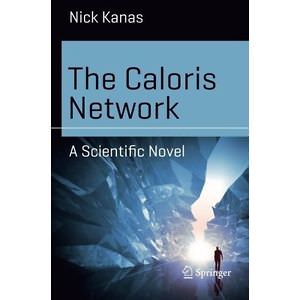Thinking of taking a vacation this summer? Maybe you want to distract yourself with a bit of light science fiction fun. How about a deadly alien life form harbored within our solar system? That’s what Nick Kanas presents in his scientific novel “The Caloris Network.” Being placed not too far into the future, this novel lets the reader enjoy a believable taste of first contact that’s hopefully just as good as the contact from their first summer kiss.

A pleasant novel has an intriguing plot that’s embellished with the interaction of fun characters. Sometimes it will also carry a somber undertone ringing in the background. So unravels the novel “Caloris Network.” The main character, Sam, is an astrobiologist fresh from looking at multicellular life on Europa. At home, her family suffers serious health concerns but she’s continuing with her efforts. Her research takes her to Mercury where something is raising the concern of the spacefaring military. Her fellow crew members involve a possible Martian secessionist, a cranky commander and a love triangle. All this is pretty typical fare.
Next up you may think there’d be the traditional English speaking alien biped threatening the very existence of the human race. But not this time. Instead Kanas identifies the protagonist as a silicate based lifeform on Mercury. No legs for walking and no lips for speaking. Further, this is the proverbial first contact between the human race and a living, thinking organism from another world. Will it be confrontational? As usual. Will it involve death rays? Kind of. Will it force the reader to ponder how to interact for the first time with an alien? Certainly! This is the best part of the book in that it places the reader not so far into the future so as to make the story readily believable. Being barely over a hundred years away, the reader can connect with the technological advances for an expedition on Mercury, for living on Mars and for the poor environmental state of Earth. With the simple lives of the expedition’s crew, the constrained space travel and the understated alien, Kanas has written a novel that would be fun for that long car ride or a day on the beach.
As a bonus, the author includes a chapter at the end of the book that discusses some of the science presented. It has details on what we’ve discovered of Mercury, particularly with regard to what a human visitor might encounter if standing on its surface; the temperature from searing heat to mind numbing cold, a Sun that changes direction in the sky and effects of a molten interior.
For even more fun when you’re at the beach, there’s an inclusion of how to define life. For instance, “Does it need to move?” “What do we mean by reproduction?” “How do we test for the ability to think?” and most entertaining of all, “How do we communicate with it when we can’t even communicate with dolphins yet?” These and other ideas in the novel may keep you up late discussing our very existence while watching the embers of the cottage campfire settle to a deep dark red.
Certainly something on Europa, Titan and Venus awaits people. Maybe it’s alien life. Maybe the life prefers to exist without humans coming to explore. Maybe they will be exactly as what Nick Kanas writes in his scientific novel “The Caloris Network”. With your imagination, take this novel’s plot as believable and see where it takes you. And maybe by reading this on your vacation, you may think that you’ve waited long enough and it’s time to go find out.
This book is available through Springer.
About the author, Dr. Nick Kanas.

